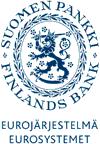 Scientific Monographs, Bank of Finland
Scientific Monographs, Bank of Finland
No E:36/2006:
Essays on Russia’s Economic Transition
Laura Solanko ()
Abstract: This study comprises an introductory section and three
essays analysing Russia’s economic transition from the early 1990s up to
the present. The papers present a combination of both theoretical and
empirical analysis on some of the key issues Russia has faced during its
somewhat troublesome transformation from state-controlled command economy
to market-based economy. The first essay analyses fiscal competition for
mobile capital between identical regions in a transition country. A
standard tax competition framework is extended to account for two features
of a transition economy: the presence of two sectors, old and new, which
differ in productivity; and a non-benevolent regional decision-maker. It is
shown that in very early phase of transition, when the old sector clearly
dominates, consumers in a transition economy may be better off in a
competitive equilibrium. Decision-makers, on the other hand, will prefer to
coordinate their fiscal policies. The second essay uses annual data for
1992–2003 to examine income dispersion and convergence across 76 Russian
regions. Wide disparities in income levels have indeed emerged during the
transition period. Dispersion has increased most among the initially
better-off regions, whereas for the initially poorer regions no clear trend
of divergence or convergence could be established. Further, some – albeit
not highly robust – evidence was found of both unconditional and
conditional convergence, especially among the initially richer regions.
Finally, it is observed that there is much less evidence of convergence
after the economic crisis of 1998. The third essay analyses industrial
firms’ engagement in provision of infrastructure services, such as heating,
electricity and road maintenance. Using a unique dataset of 404 large and
medium-sized industrial enterprises in 40 regions of Russia, the essay
examines public infrastructure provision by Russian industrial enterprises.
It is found that to a large degree engagement in infrastructure provision,
as proxied by district heating production, is a Soviet legacy. Secondly,
firms providing district heating to users outside their plant area are more
likely to have close and multidimensional relations with the local public
sector.
Keywords: Russia; transition; regional issues; tax competition; infrastructure; (follow links to similar papers)
JEL-Codes: L21; O47; P35; (follow links to similar papers)
138 pages, November 11, 2006
Before downloading any of the electronic versions below
you should read our statement on
copyright.
Download GhostScript
for viewing Postscript files and the
Acrobat Reader for viewing and printing pdf files.
Full text versions of the paper:
E36.pdf 
Download Statistics
Questions (including download problems) about the papers in this series should be directed to Päivi Määttä () or Minna Nyman ()
Report other problems with accessing this service to Sune Karlsson ()
or Helena Lundin ().
Programing by
Design by Joachim Ekebom
 Scientific Monographs, Bank of Finland
Scientific Monographs, Bank of Finland
 Scientific Monographs, Bank of Finland
Scientific Monographs, Bank of Finland